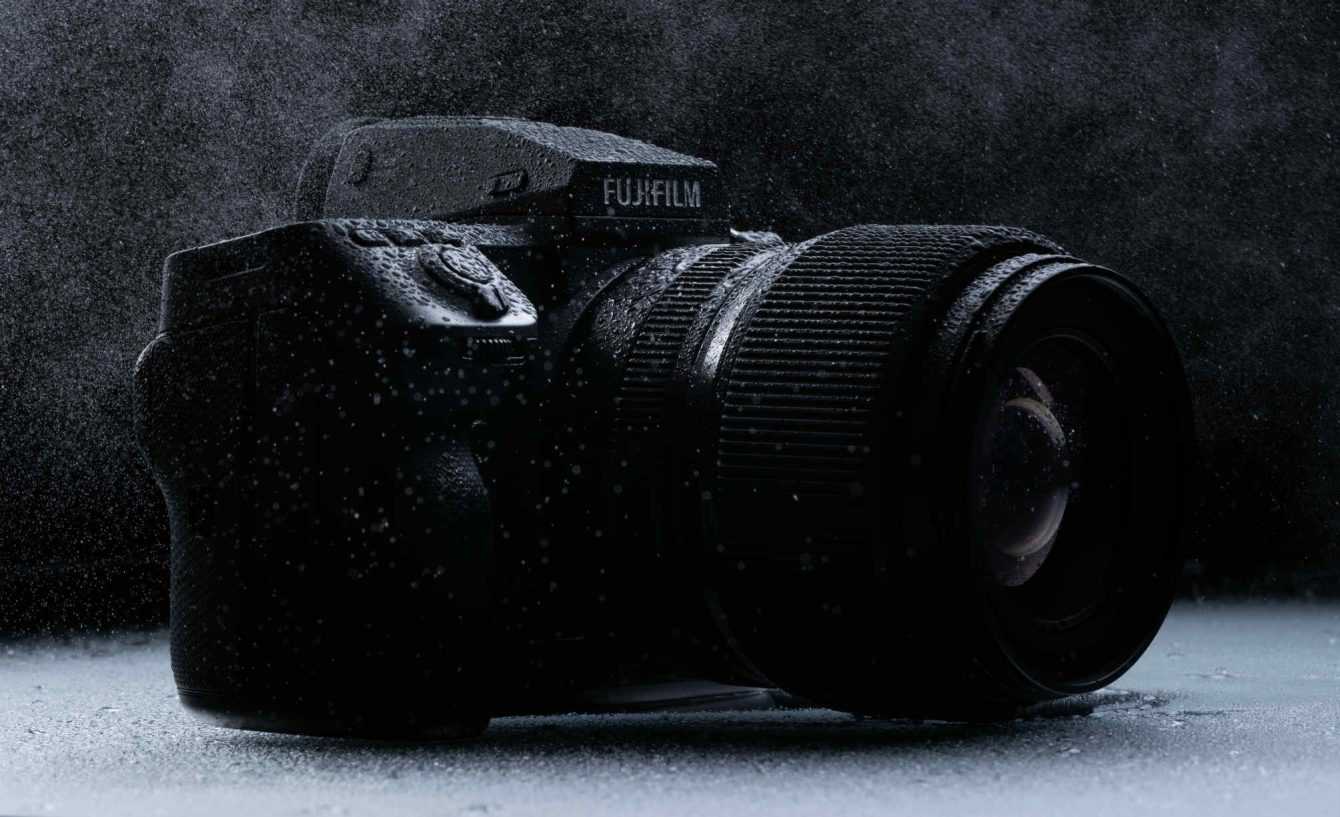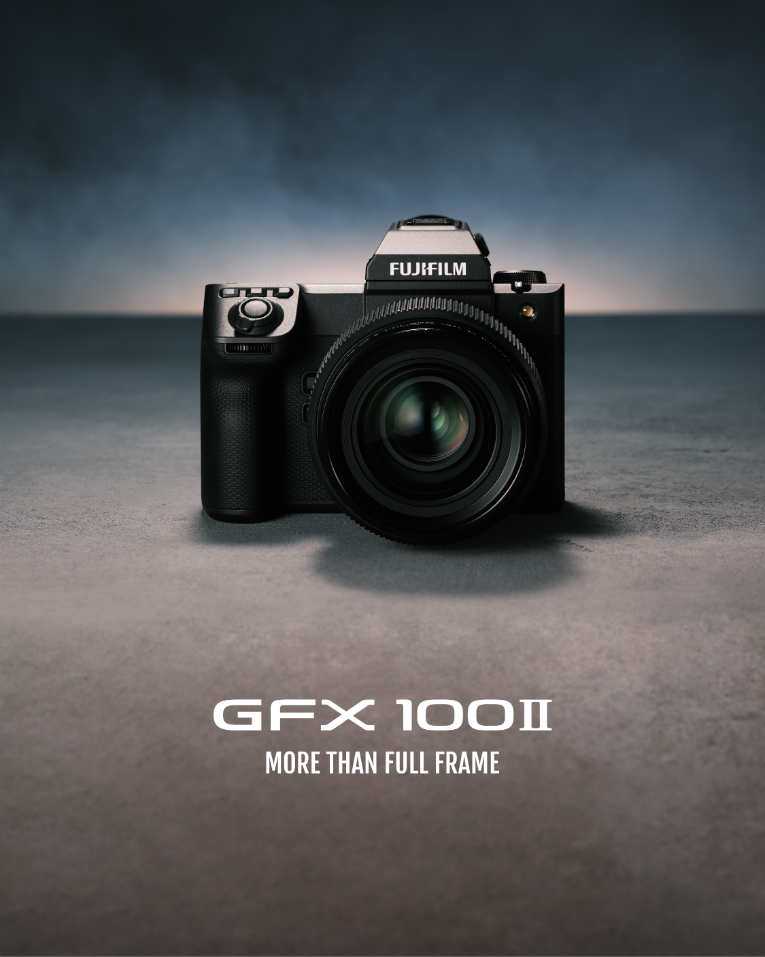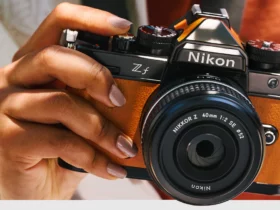FUJIFILM GFX100 II is the new flagship model of the GFX Series which offers a significant improvement in performance in continuous shooting, AF and video recording: let’s discover its features together
The new FUJIFILM GFX100 II features the newly developed 102MP high-speed image sensor “GFX 102MP CMOS II HS” and the “X-Processor 5” high-speed image processing engine to provide up to double the speed of signal reading compared to the current model.
The GFX100 II boasts superior image quality thanks to the use of the large format sensor that produces rich tonal gradation and strong three-dimensional definition. Furthermore, the latest High Speed image sensor coupled with the High Speed Image Processing Engine has made it possible to bring AI-based subject detection AF, developed with AI-based technology, to the GFX series for the first time. Deep Learning, and the latest predictive AF algorithm developed with X-H2S. Burst shooting performance has also improved from the current 5.0 frames per second to 8.0 frames per second to broaden the possibilities of use, from fashion, commercial and landscape shots to sports and news shots, where high-speed performance is essential.
FUJIFILM: the new mirrorless GFX100 II presented
The use of the new sensor It also led to a significant improvement in video recording performance. For the first time in the GFX range, this camera can internally record 4K/60P and 8K/30P video in 10-bit 4:2:2 format. It also offers new “Video Format” modes to take advantage of the features of the Large Format sensor. The camera supports various cinema recording formats, including premix, 35mm and anamorphic (35mm) when using these lenses via an adapter ring. This enables video recording in a wide range of situations, also complemented by the faster sensor readout speed and AF tracking.
The performance improvement also concerns the expandability of the system. The body of the GFX100 II features an Ethernet port as well as HDMI Type A and USB-C connectors for better connectivity with external devices. Support for the “Frame.io Camera to Cloud” cloud service and timecode synchronization with ATOMOS AirGlu BT significantly simplify the workflow.
Image quality has also been improved with the introduction of ISO80 sensitivity in the native range and the “REAL ACE” film simulation mode. Hardware enhancements include five-axis in-body image stabilization (IBIS) up to 8 STOP and 9.44 million pixel high-magnification, high-definition EVF with 1.0x viewfinder magnification. New body design features include a large secondary LCD screen, a sloped top panel, and a new textured surface finish. GFX100 II represents the evolution of the current model in all areas to meet the needs of professional photographers and videomakers.

FUJIFILM: presented the new mirrorless GFX100 II| the main features
Below we discover all the main features of the new mirrorless FGX100 II and the improvements compared to the original model.
The highest burst and AF performance in the history of the GFX Series thanks to the all-new “GFX 102MP CMOS II HS” high-speed image sensor and “X-Processor 5” high-speed image processing engine
- The GFX100 II features the newly developed 102MP “GFX 102MP CMOS II HS” image sensor that boasts a signal readout speed of up to double that of the current model to enable continuous shooting at up to 8.0 frames per second. Users can enjoy rapid-interval burst shooting without any stress thanks to the enhanced buffer memory. In the field of sports photography, difficult with previous GFX range models, the GFX100 II allows you to capture decisive photographic moments while preserving the high definition and high image quality synonymous with the Large Format sensor.
- The use of an improved algorithm has evolved Face/Eye AF and introduced AI-based subject detection AF, developed with Deep Learning technology. The power of artificial intelligence means the camera can now detect animals, birds, cars, motorcycles, bicycles, airplanes, trains, insects and drones. A detected subject is automatically tracked and held in focus so users can focus on shooting opportunities and framing. The advanced predictive AF algorithm allows for greater effectiveness of advanced tracking features for fast-moving subjects, such as in sports photography.
- The camera features a new high-definition, high-magnification EVF viewfinder with 9.44 million pixels and 1.0x magnification. It suppresses parallax and distortion that typically occurs when the eye position is moved while using the viewfinder, thus providing a better user experience. The EVF boasts a refresh frame rate of approximately 120fps to smoothly and accurately identify a subject’s rapid movements.
- The Zone AF function can now be customized. The shape of the AF area can be adjusted to suit the shooting situation for more accurate autofocus.
Wider range of photographic expressions, thanks to native ISO80 sensitivity and new “REALA ACE” film simulation mode
- The improved pixel structure of the new sensor has increased the saturated electrons, thus allowing the use of ISO80 as the standard sensitivity. When the sensor sensitivity is set to ISO80, the camera can capture images with greater dynamic range and lower noise than the previous model.
- The new sensor’s microlenses have been improved to increase the efficiency of light capture at the edges of the sensor, thus improving image quality at the edges and AF precision compared to the previous model.
- The GFX100 II features a total of 20 film simulation modes, including the new “REAL ACE” to give images an even more diverse range of original tones. “REALA ACE” offers faithful color reproduction and high-contrast tones, making it suitable for any subject and situation.
- The camera is equipped with the Pixel Shift Multi-Shot function, which enables 4x resolution and accurate color reproduction. The IBIS mechanism is precisely controlled to move the image sensor by 0.5 pixels and shoot 16 RAW images in rapid succession. The dedicated “Pixel Shift Combiner” software is then used to combine the 16 RAW files to generate a 400MP image. This is the perfect choice for commercial photography or digital archiving of cultural heritage.
- The camera supports the HEIF file format, which provides 10-bit color depth while maintaining the file size at 70% that of the JPEG format to allow images to be stored with greater quality and efficiency.
Advanced video performance to meet the needs of professional video production
- The use of the new sensor has made it possible to implement internal recording in 4:2:2 format at 10bit of 4K/60P and even 8K/30P movies. The sensor’s reading speed has been increased to suppress the rolling shutter effect and thus allow natural shots even of moving subjects. ISO100 sensitivity is now also available in video mode for shooting with even higher image quality.
- The GFX100 II supports three Apple ProRes codecs, namely Apple ProRes 422 HQ, Apple ProRes 422 and Apple ProRes 422 LT. When shooting in one of these three formats, the camera allows you to enable simultaneous recording of the Apple ProRes 422 Proxy format, which reduces the video editing workload to simplify the overall flow, from shooting to post-production.
- The camera supports various cinema recording formats, including premix, 35mm and anamorphic (35mm) when using these lenses via an adapter ring. It is possible to record video with optimized settings, so as to satisfy an ever-increasing number of expressive needs.
- AF tracking function for video recording has been added. Users can tap the screen to specify which subject to track when shooting in AF-C + Wide/Tracking AF mode. This allows the camera to track the desired subject even in situations where there are multiple subjects in the frame.
- This is the first GFX series camera to feature F-Log2 with extended dynamic range up to 14+ stops. This improvement enables video recording with enriched tones, thus significantly expanding post-production potential.
- The GFX100 II can generate video up to 8K/30P 12-bit in RAW format via HDMI output. The camera can record video in Apple ProRes RAW format when paired with the ATOMOS NINJA V+ monitor and in Blackmagic RAW format when used with the Blackmagic Design Video Assist 12G monitor.
- The camera supports timecode synchronization with ATOMOS AirGlu BT. This enables seamless timecode synchronization with multiple cameras, thus meeting the demand in the field of video productions.
Wide expandability of the system
- The camera body features an Ethernet port and HDMI Type A and USB-C terminals to significantly expand connectivity with external devices for different combinations of peripherals.
- You can connect an external SSD via USB-C to record photos and videos directly to the SDD in any mode or format, including 4K/60P and 8K/30P.
- The camera supports the “Frame.io Camera to Cloud” cloud service, so that Apple ProRes proxy files and a variety of other video files can be uploaded directly to Frame.io, thus greatly simplifying the workflow from shooting to ‘editing.
- The camera is equipped with two memory card slots that support both CFexpress Type B and widely used SD cards. Using a CFexpress Type B card with high write speed allows you to make the most of the video performance of the GFX100 II.
- The GFX100 II features a new IBIS mechanism that improves stabilization precision while also using image information to detect camera shake. The result is five-axis stabilization performance of up to 8 STOP, the best among Fujifilm cameras. Users can shoot handheld with ease even in low-light situations, such as nightscapes. This mechanism…
















Leave a Reply
View Comments